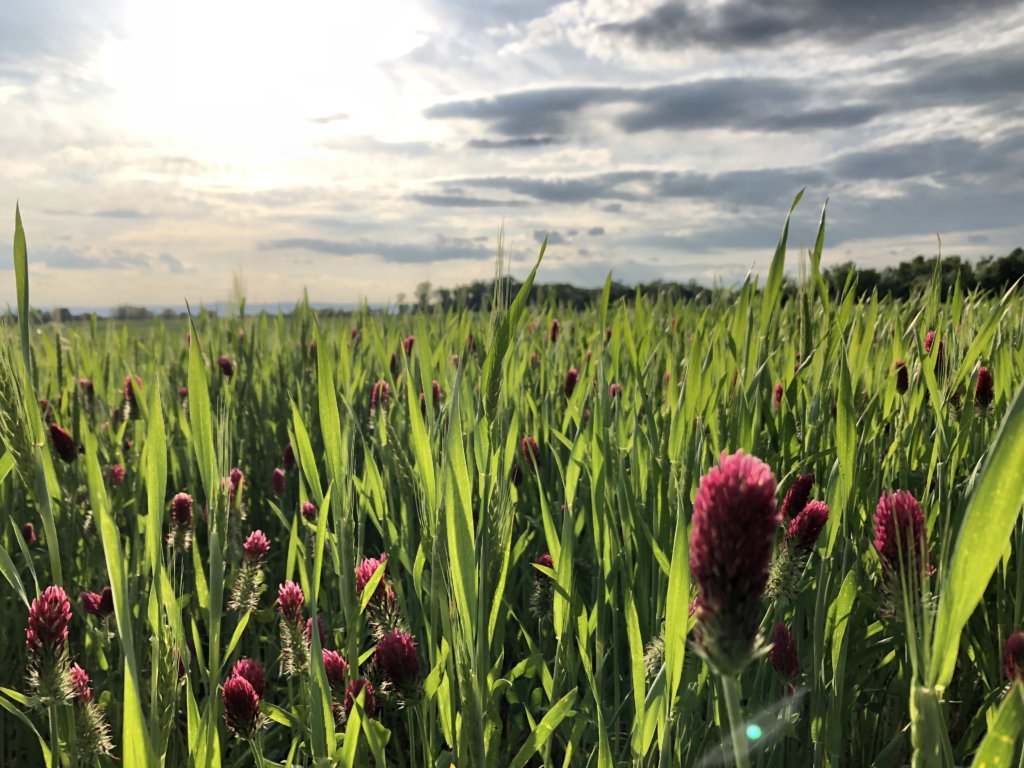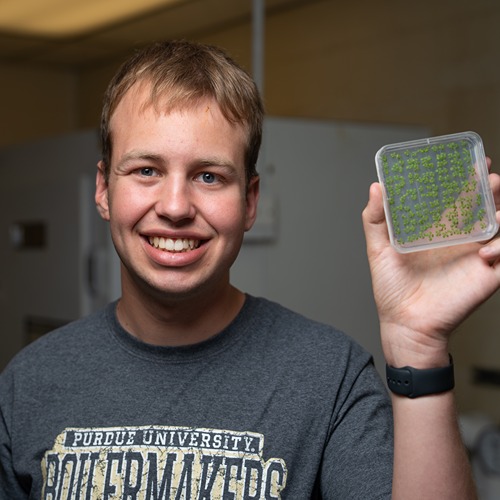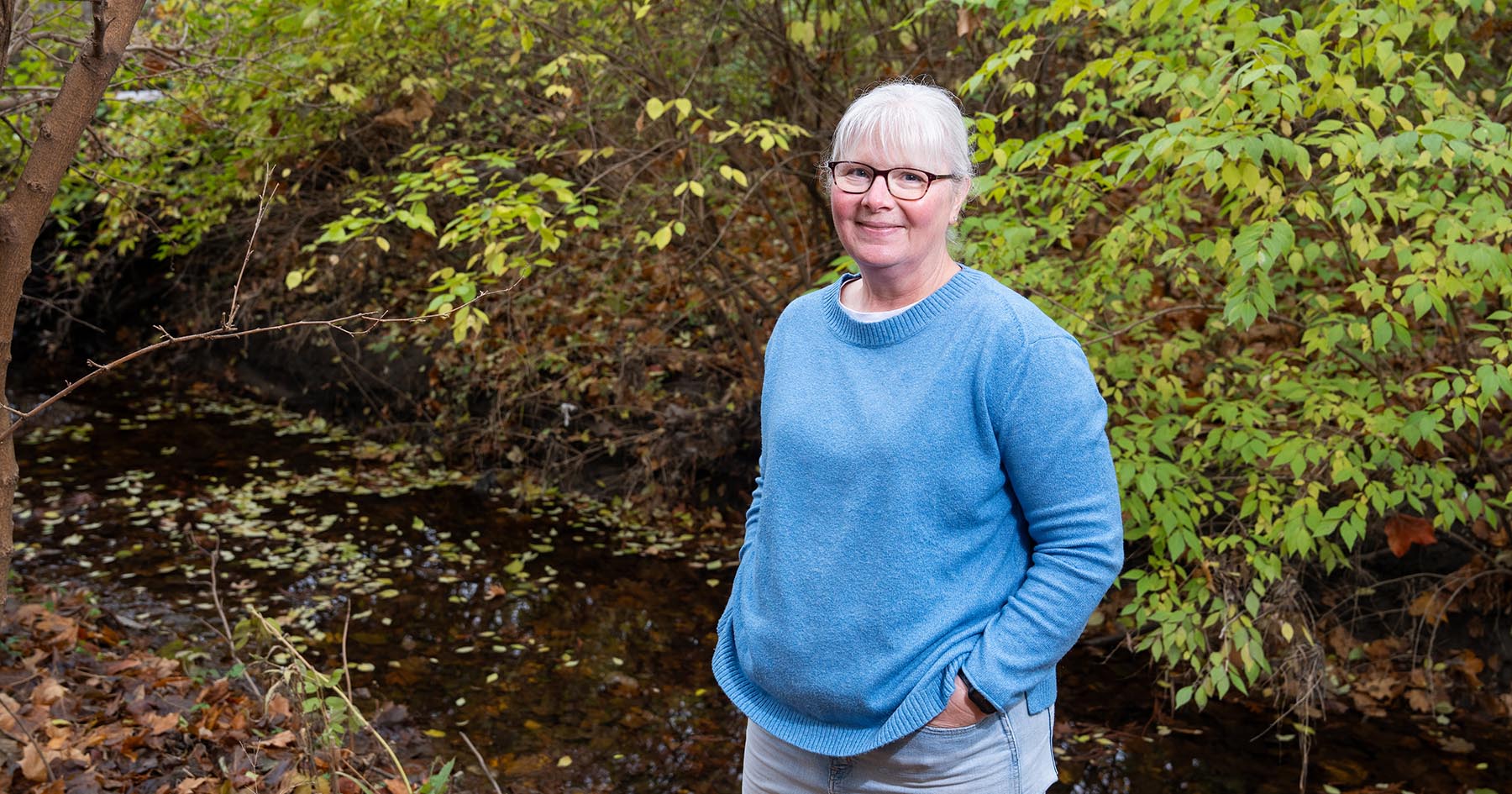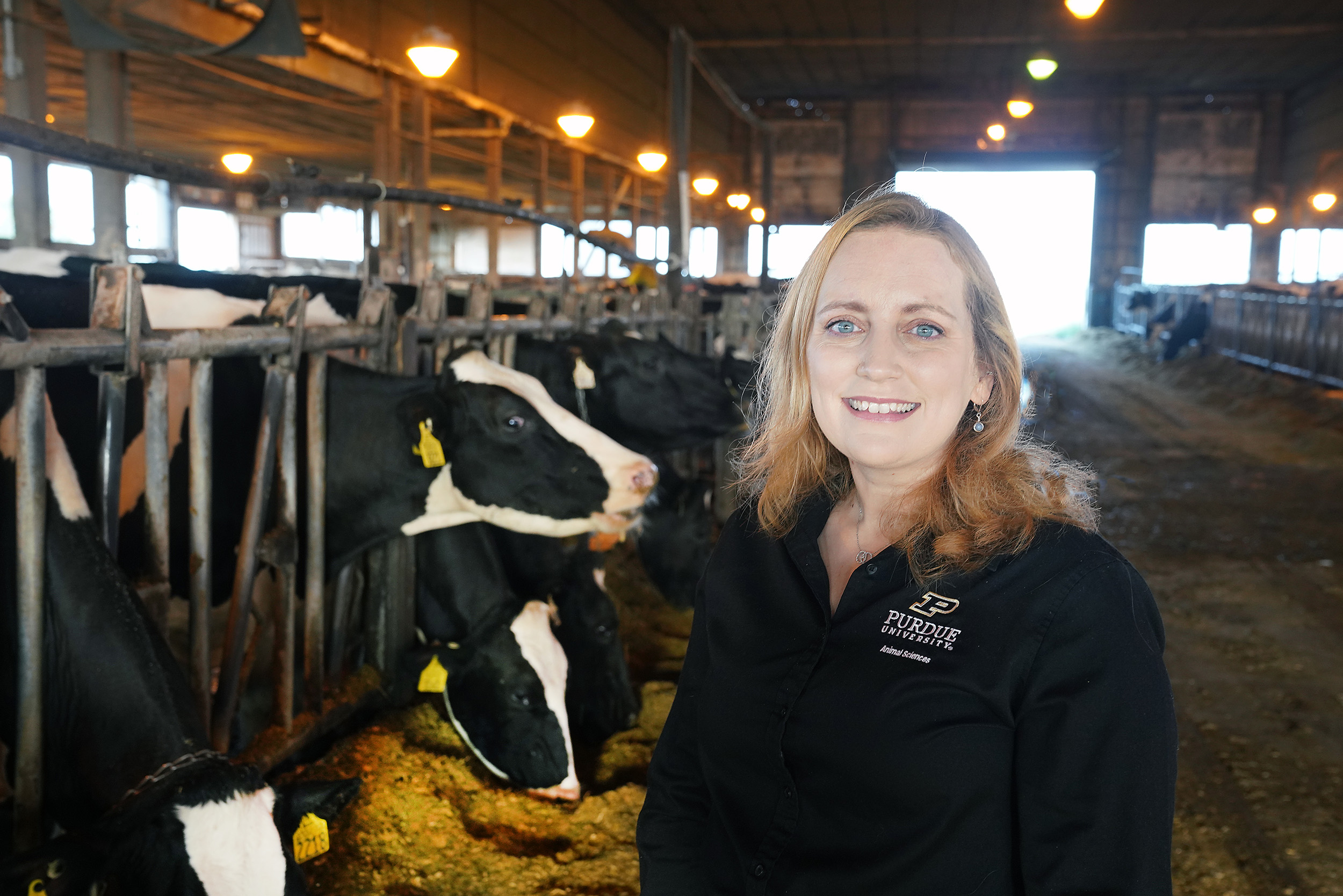Long-term study will offer more data on cover crop benefits
The popularity of cover crops has reemerged in recent years with farmers looking to a variety of grasses, brassicas and legumes to improve soil health. Cover crops can also improve water holding capacity, reduce erosion and weed pressure, reduce nitrogen leaching, increase soil organic matter, and potentially decrease nitrogen fertilizer application rates over the long term.
Still, only about 10 percent of Indiana farmers use cover crops, although that’s double the national average. One reason is that there are few long-term studies of the benefits of cover crops, both for understanding their ability to improve soil health and to reduce on-farm costs.
“We see positive cover crop effects anecdotally, but we want to be able to quantify those effects over time,” said Shalamar Armstrong, a Purdue assistant professor of agronomy. “We are trying to reduce the questions surrounding the proper management of cover crop for sustainable and profitable crop production.”

Armstrong is leading a team of Purdue scientists hoping to connect data with the anecdotal evidence. Purdue is receiving about $1 million of a $10 million U.S. Department of Agriculture National Institute of Food and Agriculture grant awarded to North Carolina State University through the Agriculture and Food Research Initiative. Armstrong, Eileen Kladivko, professor of agronomy, Ankita Raturi, assistant professor of agricultural and biological engineering, Linda Prokopy, professor of forestry and natural resources, and Anna Morrow, Midwest Cover Crops Council program manager, are part of a team of researchers throughout the eastern part of the country who will examine the benefits of cover crops in corn, soybeans and cotton.
“The effort here is bringing together scientists to advance our knowledge of cover crops and to provide data that enables farmers to adapt management in their own operations for profitable production,” Armstrong said. “We’re studying all aspects of cropping systems that include cover crops to enhance profitability, sustainability and resilience.”
In particular, Purdue scientists are interested in the amount of nitrogen cover crops might add to the soil, reducing the amount that must be applied through synthetic fertilizers. These nitrogen credits will be key to cover crops’ profitability. Armstrong said field trials will include testing different types of cover crops, evaluating the relative nitrogen contributions of the above-ground and below-ground portions of the cover crops when planting commodity crops in the spring, various nitrogen application rates and other tests.
The researchers will also use sensing equipment to monitor the impact of cover crops on water movement through soil, soil temperature, soil moisture and other factors that can affect soil organic matter, nutrient losses and the need for irrigation.
Raturi will focus on the design and development of information tools for sustainable agricultural applications. She will be working with researchers to develop data flow tools for use in their experiments and cyberinfrastructure for management of data in large-scale collaborative agricultural research. She will also conduct human-centered design research and co-development of decision-support tools for farmers to manage cover crops, assess their environmental outcomes and adopt sustainable agricultural practices.
“We want to develop a suite of decision-support tools based on the findings that come out of the on-farm cover crop research activities,” Raturi said. “We will use this data to provide site-specific knowledge for the management of cover crops, nitrogen, weeds, pests and much more.”
Kladivko said having a five-year study will be especially helpful because it will answer fundamental questions about how soil and nutrients are affected over longer periods of time.
“Indiana is ahead of the average on cover crop adoption, which we’re really proud of. But there are good reasons some people are reluctant to adopt them,” Kladivko said. “We know a lot in general about cover crops. But in order for more people to actually use them on their farms, there are specific questions they’ll need answered. This study should go a long way toward answering them.”






